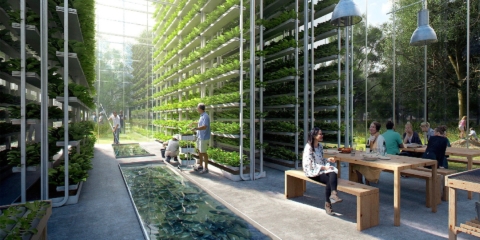Would you like to get notifications from Christian?
What Happened? Engineers have developed a new class of smart textiles that can shape-shift and turn a two-dimensional material into 3D structures. The team from UNSW Sydney’s Graduate School of Biomedical Engineering, and Tyree Foundation Institute of Health Engineering (Tyree iHealth), led by Dr. Thanh Nho Do, have produced a material that is constructed from tiny soft artificial ‘muscles’ – which are long silicon tubes filled with fluid which are manipulated to move via hydraulics. These artificial muscles, which are surrounded by a helical coil of traditional fibers, can be programmed to contract or expand into various shapes depending on their initial structure.
Why is this important, and how will this impact people and our planet? This technology can revolutionize the robotics industry as it would allow for robot limbs and other 3D structures to be created with a high degree of flexibility. Additionally, this technology could also be used in biomedical applications such as creating artificial blood vessels or implants that can change shape. The team is currently working on improving the strength and durability of their materials and commercializing their technology in the next few years.
Do you think this technology is promising? What other applications can you think of for this technology? Let us know in the comments below!
Author: Christian Kromme
First Appeared On: Disruptive Inspiration Daily
Christian is a futurist and trendwatcher who speaks about the impact of exponential technologies like AI on organizations, people, and talents. Christian tailors his presentations to your audience’s specific industries and needs.




Embracing the advancements of technology and AI can enhance our humanity. We can focus on developing our unique talents and skills by automating mundane tasks and freeing up our time. As humans, we can adapt and learn, allowing us to evolve and stay relevant in a rapidly changing world constantly.


Organizations will need to be more fluid, dynamic, and adaptable: the ability to change and adjust in response to new situations and environments. We are on the cusp of a new era of organizations, ones that are more fluid and agile and which behave like swarms we see in nature.




In the future, 3D printing and generative design will allow for products to be designed in a more decentralized manner, and production will take place closer to the customer and fully on-demand. 3D printing technology will also allow for more customization and personalization of products.


The agricultural industry is ripe for disruption. Robotics, AI, and IoT are all technologies that have the potential to radically transform the way we grow food. In combination with vertical farming, these technologies could increase the efficiency and quality of agricultural products.

A human-centered society is one that puts people first and where technology is used to unite and empower people. It is a society that values biological life and dignity above all else. It is a society that recognizes the importance of human relationships and works to strengthen them. In a human-centered society, all members of the community are valued and treated with respect.


The future of healthcare is here. New technologies like AI, IoT, big data, and smart sensors make it possible to become the CEO of your own health. Imagine that your phone can listen to your voice and AI algorithms can detect small nuances in the tone of your voice that indicate specific diseases.
